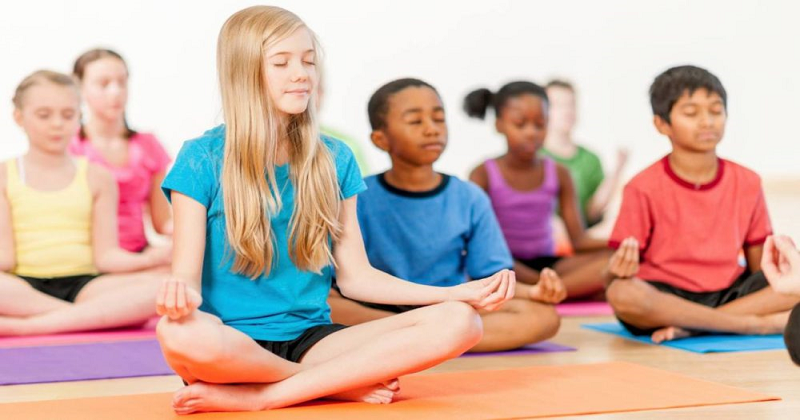
Our children live in a hurry-up world of busy parents, school pressures, incessant lessons, video games, malls, and competitive sports. We usually don’t think of these influences as stressful for our kids, but often they are. The bustling pace of our children’s lives can have a profound effect on their innate joy—and usually not for the better.
I have found that yoga can help counter these pressures. When children learn techniques for self-health, relaxation, and inner fulfilment, they can navigate life’s challenges with a little more ease. Yoga at an early age encourages self-esteem and body awareness with a physical activity that’s noncompetitive. Fostering cooperation and compassion—instead of opposition—is a great gift to give to our children.
Children derive enormous benefits from yoga. Physically, it enhances their flexibility, strength, coordination, and body awareness. In addition, their concentration and sense of calmness and relaxation improve. Doing yoga, children exercise, play, connect more deeply with the inner self, and develop an intimate relationship with the natural world that surrounds them. Yoga brings that marvellous inner light that all children have to the surface.
When yogis developed the asanas many thousands of years ago, they still lived close to the natural world and used animals and plants for inspiration—the sting of a scorpion, the grace of a swan, the grounded stature of a tree. When children imitate the movements and sounds of nature, they have a chance to get inside another being and imagine taking on its qualities. When they assume the pose of the lion (Simhasana) for example, they experience not only the power and behaviour of the lion but also their own sense of power: when to be aggressive, when to retreat. The physical movements introduce kids to yoga’s true meaning: union, expression, and honour for oneself and one’s part in the delicate web of life.
Six years ago, I had my first experience teaching yoga to kids at a local Montessori school. I looked forward to the opportunity with confidence—after all, I’d been teaching yoga to adults for quite a while, had two young children of my own, and had taught creative writing for several years in various Los Angeles schools. But after two classes with a group of 3 to 6-year-olds, I had to seriously reevaluate my approach. I needed to learn to let go (the very practice I had been preaching for years) of my agenda and my expectations of what yoga is and is not.
When I began to honour the children’s innate intelligence and tune in to how they were instructing me to instruct them, we began to co-create our classes. We used the yoga asanas as a springboard for an exploration of many other areas—animal adaptations and behaviour, music and playing instruments, storytelling, drawing—and our time together became a truly interdisciplinary approach to learning. Together we wove stories with our bodies and minds in a flow that could only happen in child’s play.
The kids began to call me Mrs. Yoga, and I called them Yoga Kids. We continued to work and play together until our creations bloomed into a program called YogaKids. The program combines yogic techniques designed especially for children using Dr. Howard Gardner’s theory of multiple intelligences. Gardner, an author and professor of education at the Harvard Graduate School of Education, describes eight intelligences innate in all of us—linguistic, logical, visual, musical, kinesthetic, naturalistic, interpersonal, and intrapersonal—and emphasizes that children should be given the opportunity to develop and embody as many of these as possible.
In keeping with this theory, YogaKids integrates storytelling, games, music, language, and other arts into a complete curriculum that engages the “whole child.” We employ ecology, anatomy, nutrition, and life lessons that echo yogic principles of interdependence, oneness, and fun. Most of all, our program engages the entire mind, body, and spirit in a way that honours all the ways children learn.

Post Your Comments